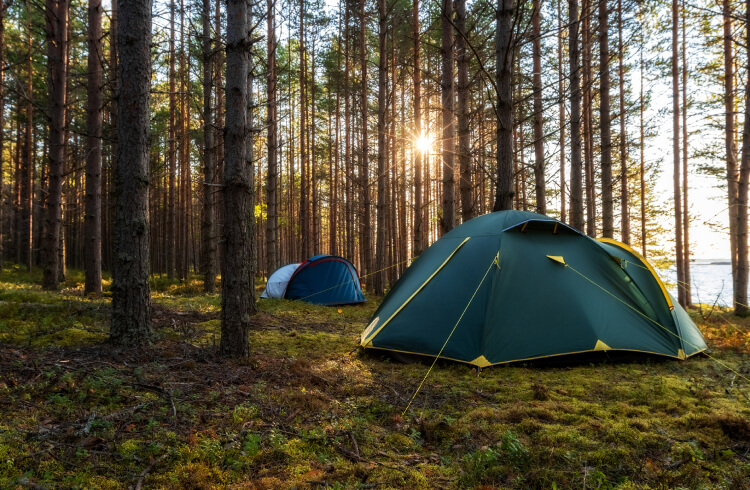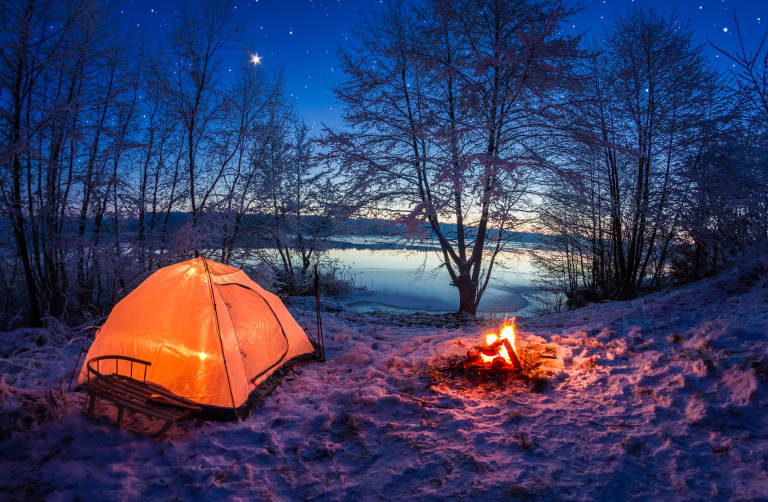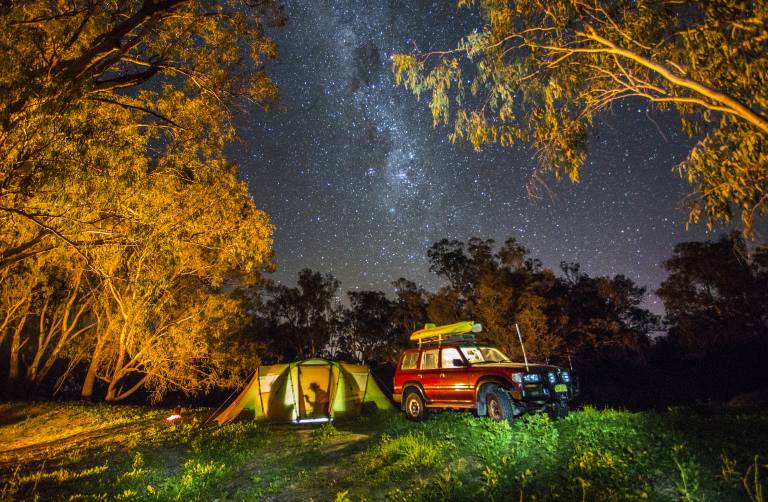How to Choose the Right Gear for Your Next Camping Trip
Choosing the best gear for your camping adventure can make all the difference to how much fun you have. Here’s what to look for and why.
 Photo © Getty Images/rbkomar
Photo © Getty Images/rbkomar
In an age where there’s no shortage of camping brands vying for your patronage, it’s important to be savvy when you need to update your kit. And whether you’re out for a multi-day trek, or enjoying a weekend by the lake, backpacks, tents, and sleeping bags are the most universal camping items. So, as you hunt for the right ones for you, here are a few guidelines to help you along the way.
Backpack
Capacity
Measured in liters (L), backpack capacity tends to range from 6L all the way up to 100L, with a few exceptions running smaller or larger than this spectrum. Here’s a rough guideline to help you pick a size depending on your activity:
Day trips: a capacity of 30L or less is sufficient for most day trips.
Weekend trips: more space is needed for overnight gear, but the goal should still be to keep the pack as small as possible. 30L-50L is a good range for the weekend.
Multi-day: for a trip this length, you’ll need to bring extra food, clothing, and other essentials. Consider purchasing a 50L-70L backpack.
A week (or longer): depending on how well you can pack a backpack, 70L might be big enough. However, most of you will want something larger than 70L for a trip this long.
Sizing
When you’re getting sized for a backpack, remember that it’s not your height that matters – it’s your torso length. Most brands are pretty good at providing different sizing options, ranging from small to large, along with models specifically designed for men and women. However, if you find that you land somewhere between sizes, I’d suggest looking into a backpack with an adjustable suspension. These tend to be a bit heavier, but they give you the flexibility needed to find that perfect fit.
Waist size should be another consideration since most of your pack weight should be resting on your hips. As a rule of thumb, backpack waist belts can usually accommodate waist circumferences between 20-40 inches. If you don’t fall in that range, many packs give you the option to switch out the belt with something more suitable for your size.
Additional features
A certain amount of ventilation keeps your back from getting too sweaty, and a generous amount of padding is great for comfort, if you don’t mind the extra weight.
There’s also the matter of storage and compartments to aid in organizing your gear. Some packs come with a compartment specifically for your sleeping bag, most come with a top lid (also called a “brain”), and water bottle pockets are pretty standard.
Tent
To get a properly sized shelter, you’re going to need to determine how many people are going with you. If your tent is too large, you’re going to be carrying around more weight than necessary. If it’s too small, you and your pals are going to get to know each other far better than you ever planned on.
As a rule of thumb, tents run smaller than their marketed capacity, so always size up when choosing a shelter. I like to use a two-person tent just for me, a four-person tent works great for a couple, and a six-person tent is perfect for a family of four.
Weather resistance
All tents serve two primary roles: protecting you from the elements and keeping the bugs away. So how do you know if your tent will hold up in bad weather? In theory, it’s as simple as looking at the waterproof rating (measured in millimeters) on the tent. A fabric needs to have a rating of 1,500mm to be considered waterproof, though I’d recommend going much higher than that - ideally 3,000mm or more.
In practice, though, you won’t really know if your tent is waterproof until you use it in the rain. For peace of mind, you can always give your tent a solid coat of waterproofing spray for extra protection.
Portability
Are your car camping or backpacking? For the former, portability won’t be much of a concern, but for the latter, you’ll want to pay close attention to this point.
Weight and packed size play a large role when it comes to the portability of your tent. If you’re planning on carrying your shelter any reasonable distance, you’ll want to keep the weight below 5-6 pounds. Likewise, if your tent materials don’t fold down very well, it’s going to be hard to fit the tent inside of your pack. For the best portability, stick with synthetic materials (like polyester and nylon), along with aluminum or fiberglass poles.
Sleeping bag
Shape
Sleeping bags come in a variety of shapes, but the most common are going to be mummy, rectangular, and semi-rectangular. As the name suggests, a mummy bag is going to hug your body and leave you with very little room to spread out. This is perfect when you want to conserve heat, or when you don’t want a heavy, bulky bag weighing you down on backpacking trips.
Rectangular sleeping bags provide much more room to spread out, but you’ll sacrifice warmth and portability for added comfort. This style is ideal for warm-weather car campers who won’t find themselves in any extreme conditions.
Semi-rectangular sleeping bags are a cross between mummy and rectangular. They have more space inside than a traditional mummy, but they’re also better at insulating than a rectangular.
Filling
The fill of a sleeping bag is what provides insulation against the cold. Your two options are going to be down and synthetic, though often, I’d suggest sticking with down.
Down provides the most insulation, it’s very lightweight and compresses into a tight bundle. It’s the primary option that a backpacker should consider, and many car campers will appreciate it as well.
Synthetic, on the other hand, is heavy, doesn’t pack down well, and lacks some insulative ability. However, it’s also the cheaper option, and it can keep you warm when it’s wet, unlike down.
Weight
Weight is important for any camping gear, and if you plan on hiking long distances with your sleeping bag, I’d recommend keeping it below three pounds. For shorter hikes or car camping, you can get away with a few more pounds tacked on, though it’s rare that you’ll find a sleeping bag that exceeds seven pounds.



No Comments